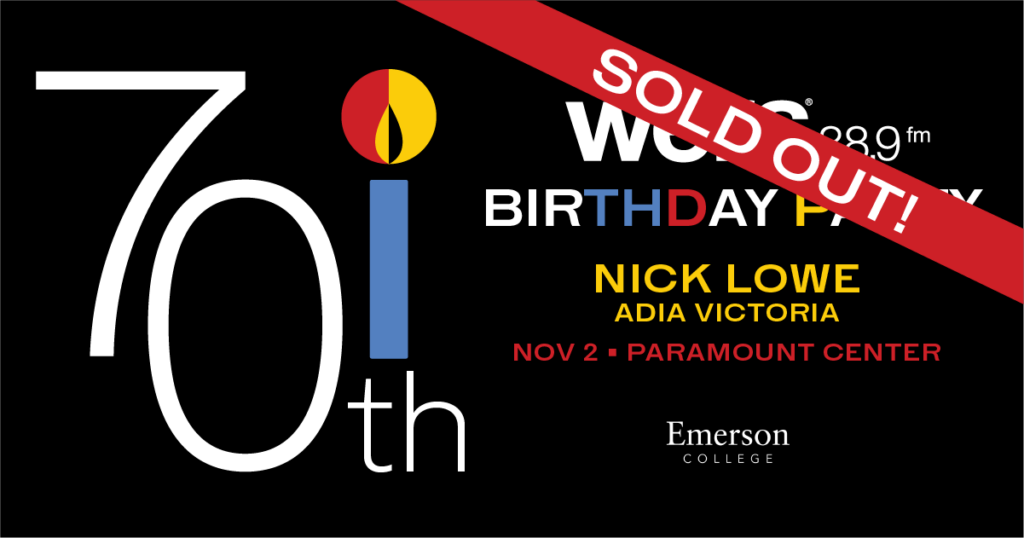
As Indigenous Heritage Month comes to a close, our writing staff takes you through seven artists that deserve to be spotlighted this month and far beyond. From legendary icons like Jimi Hendrix to up-and-coming artists based in our backyard, dive into the ways these artists incorporate their culture into their work. Plus, be sure to check out our listening recommendations.
MALI OBOMSAWIN
The bassist and singer in Boston band Lula Wiles, Obomsawin is used to working across genres. Her solo album, Sweet Tooth, blends jazz, bluegrass learned at New England fiddle camp, and the music of the Wabanaki people. In interviews she talks often about wanting white Americans to see Indigenous culture not as something that ended 300 years ago, but rather as a culture that’s continued to evolve, exist, and create great music. Take note, on Sweet Tooth, of “Wawasint8da,” a musical rendering of a trip through the Underworld. It’s based on a Catholic hymn translated into Abenaki a hundred plus years ago, and learned by tribal members who would mix it with traditional mourning songs. Mali Obomsawin’s music is about telling the full depth of a culture, not just a distant past, and her work goes beyond the arts. She’s involved directly in returning land to the Wabanaki in northern Maine too: check out the work of the Bomazeen Land Trust.
Recommended listening: “Do You Really Want the World to End” (with Lula Wiles) and “Wawasint8da.”
Plus, keep an eye out for her music in the upcoming documentary We Are the Warriors
- Phil Jones, Afternoon Host
KID CUDI
While Kid Cudi is mainly known as a rap artist, he's built his scope to expand into a creative universe. Eight studio albums; twenty-two film roles; multiple companies — those are just a few of the accomplishments that Kid Cudi has accrued over his nearly twenty year career. He was born in Cleveland and moved to New York to pursue music, with his song "Day 'n' Nite" exploding on MySpace and launching his career. With an ever-expanding filmography, discography, and business ventures, Kid Cudi isn't planning on slowing down anytime soon. He derives his Native American heritage from his father, who unfortunately died when he was ten; his father was half Yaqui and half Mexican. When celebrating both diversity and artistic innovation in music, Kid Cudi is a clear choice, and I can't wait to see what he does next.
Recommended listening: "Lovin' Me" featuring Phoebe Bridgers, "Pursuit of Happiness," and "The Void"
- Tatum Jenkins, Music Coordinator
JIMI HENDRIX
Jimi Hendrix showed off his paternal grandmother’s Native American Heritage, his sister Janie says, through his clothing. One piece, a patchwork coat, was donated to the National Museum for the Native American for their exhibit “Up Where We Belong: Native Musicians in Popular Culture.” His sister says their grandmother inspired Jimi’s style. Her feather hats and colorful costumes, you can see a reflection of in his concert attire.
Recommended listening: “Cherokee Mist” and “May This Be Love”
- Kira Weaver, Staff Writer
REDBONE
Jimi Hendrix earns some of the credit for how rock supergroup Redbone came to be. Redbone’s founding member Pat Vasquez-Vegas says that Hendrix pushed him and his collaborators to make an all-Native American rock group. Hendrix was vocal about his support, also making known that Pat’s brother Lolly Vegas was his favorite guitarist. This compliment speaks volumes considering it came from one of history’s greatest guitar players. It was in 1969 that Pat and Lolly took Hendrix’s advice and made the leap into forming a group after mostly duo-work between the brothers. Over the course of the ’70s and beyond, Redbone made it onto charts and toured around the world. “Come and Get Your Love,” featured in commercials and movies (such as Guardians of the Galaxy) and immediately recognizable today, only scratches the surface of Redbone’s timeless talent.
Recommended listening: “The Witch Queen of New Orleans,” “Only You and Rock and Roll,” and “Prehistoric Rhythm”
- Nora Onanian, Web Services Coordinator
BLU CANTRELL
Blu Cantrell is an R&B singer hailing from Rhode Island. Her biggest influence to start singing was when she began to attend her mother’s jazz shows. Blu is half white on her mom’s side and half Black and Narragansett on her dad’s side. Blu started her singing career at 17 and signed with RedZone entertainment where she produced a demo. She was nominated for best female R&B performance for her hit lead single “Hit ‘Em Up Style (Oops!)” in 2002. Her silky and passionate voice makes her a cornerstone of 2000s R&B.
Recommended listening: “Hit ‘Em Up Style (Oops!),” “Swinging,” and “Make Me Wanna Scream”
- Cate Cianci, Staff Writer
ROBBIE ROBERSTON
Robbie Robertson, whose mother is Mohawk and Cayuga, spent many summers raised in the Six Nations Reservation located in Southern Ontario. He says his mother used to tell him to be proud of his heritage but be careful to whom he tells. He abides by half of her advice, shouting from the rooftop of his ancestral roots. All of Robertson’s music is reflective of his family. He has even voiced a documentary, Rumble: The Indians Who Rocked the World, and wrote a children’s book, titled Hiwatha and the Peacemaker, both on the topic of Native American History.
Recommended listening: “Mark Jchi (Heartbeat Drum Song” and “Ancestor Song”
- Kira Weaver, Staff Writer
DIGGING ROOTS
Digging Roots bring activism to the forefront of their lyrics. Often pairing them with a compelling, beat-driven sound, it’s easy to find yourself brewing over their powerful messages striving for change. The band is the project of First Nations husband and wife duo Raven Kanatakta and ShoShona Kish. Their latest album Zhawenim (an Ojibwe word which most closely translates to the concept of showing unconditional love) came out on June 24th, 2022. It’s a title that captures both the passion flowing through the duo’s voices and the nature that all activism stems from— deep care. From their track “AK47,” which approaches gun violence, to “SKODEN,” an anthem for “small revolutions,” Digging Roots are a voice to contemporary issues. They are a voice that is recharging, refreshing and redefining. And they are a voice to carry on following.
Recommended listening: “She Calls Me,” “Sweetwater,” and “Spring to Come”
- Nora Onanian, Web Services Coordinator


